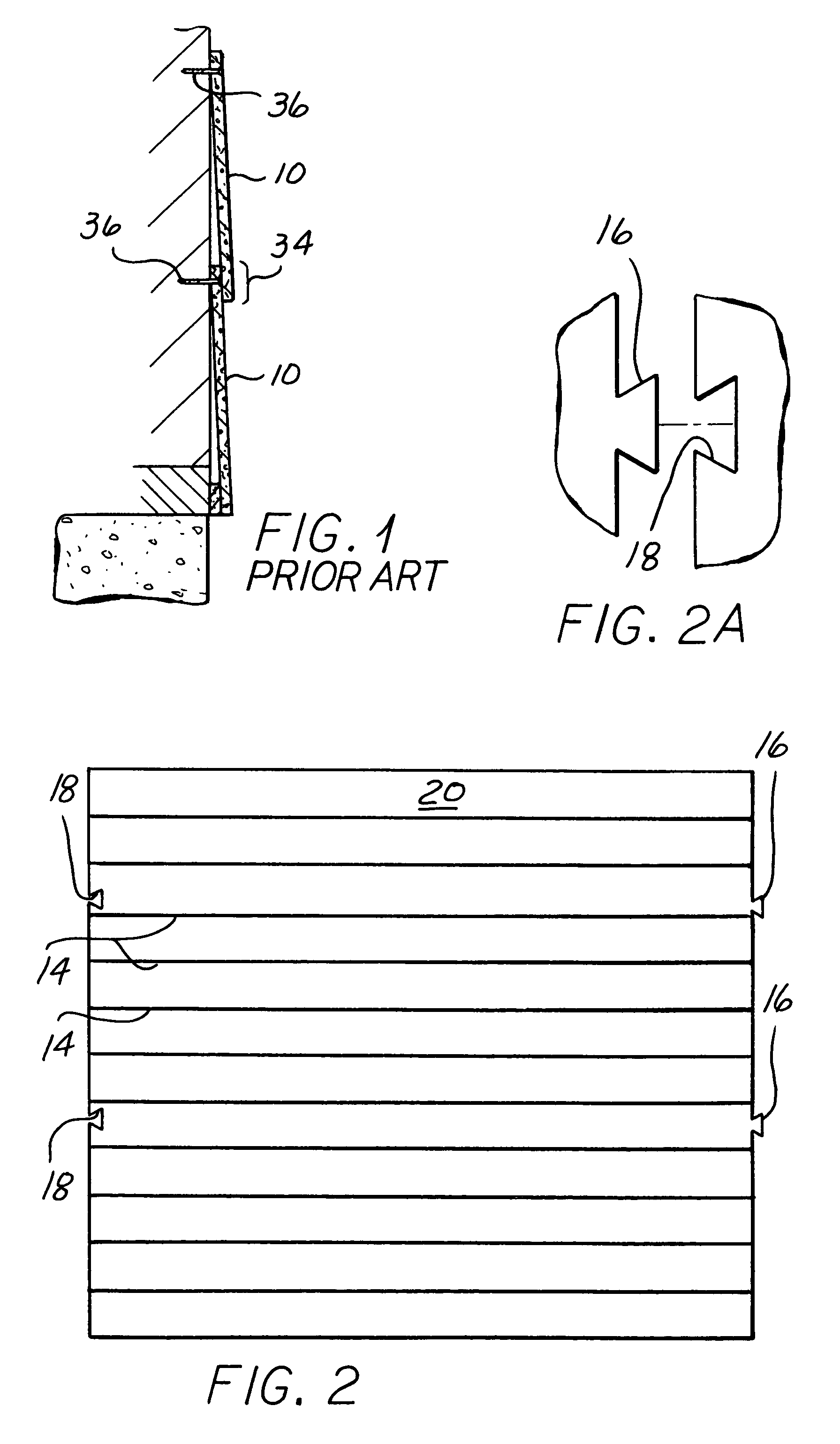Insulated fiber cement siding
a fiber cement and siding technology, applied in heat-insulating, building repairs, transportation and packaging, etc., can solve the problems of composite wood siding, difficult to work, time-consuming and laborious, and fiber cement panels are much heavier than wood, so as to eliminate the meticulous measurement of overlap
- Summary
- Abstract
- Description
- Claims
- Application Information
AI Technical Summary
Benefits of technology
Problems solved by technology
Method used
Image
Examples
Embodiment Construction
[0031]The invention outlined hereinafter addresses the concerns of the aforementioned shortcomings or limitations of current fiber cement siding 10.
[0032]A shape molded, extruded or wire cut foam board 12 has been developed to serve as a combination installation / alignment tool and an insulation board. This rectangular board 12, shown in FIG. 2 is designed to work with 1¼ inch trim accessories. The board's 12 exterior dimensions will vary depending upon the profile it has been designed to incorporate, see FIG. 3.
[0033]With reference to FIG. 2 there is shown a plan view of a contoured foam alignment backer utilized with the installation method of the first preferred embodiment. Installation and alignment foam board 12 includes a plurality or registration of alignment ribs 14 positioned longitudinally across board 12. Alignment board 12 further includes interlocking tabs 16 which interlock into grooves or slots 18. As illustrated in FIG. 2a, and in the preferred embodiment, this constr...
PUM
 Login to View More
Login to View More Abstract
Description
Claims
Application Information
 Login to View More
Login to View More - R&D
- Intellectual Property
- Life Sciences
- Materials
- Tech Scout
- Unparalleled Data Quality
- Higher Quality Content
- 60% Fewer Hallucinations
Browse by: Latest US Patents, China's latest patents, Technical Efficacy Thesaurus, Application Domain, Technology Topic, Popular Technical Reports.
© 2025 PatSnap. All rights reserved.Legal|Privacy policy|Modern Slavery Act Transparency Statement|Sitemap|About US| Contact US: help@patsnap.com



